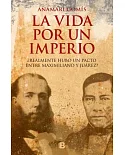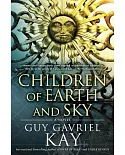She was the last surviving member of the glorious 18th Dynasty, Queen of a golden empire that stretched from the 4th cataract of the Nile to the banks of the Euphrates: Egypt at the height of
its glory and power. But Ankhsenamun and her brother-husband, Tutankhamun, the product of centuries of inbreeding, were unable to produce a living heir to the throne. Now, with word of the
untimely death of her young husband, she must consider a drastic alternative means of conceiving an heir. Later still, with her aging grandfather on the throne, faced with the intolerable
prospect of being forced into marriage with Egypt's strongman, General Horemheb, and the strong possibility of being murdered by his jealous and power-hungry principal wife, she contemplates
yet another drastic step: applying to Egypt's arch-enemy, the King of the Hittites, for one of his sons to marry.Astonishingly, we have both sides of this remarkable correspondence in the
archaeological record. Ankhsenamun wrote to Suppililiuma, King of the Hittites, asking him to send one of his sons for her to marry so that she did not have to marry her "servant". After
sending a delegation to enquire into the legitimacy of this proposal, Suppililiuma sent his son, Prince Zenanza, to Egypt, but he was assassinated along the way. General Horemheb later took
credit for the act. Ankhsenamun then disappears from the record. Her fate is a mystery. Did she die? Was she murdered? Or did she, just possibly, escape? If so, where did she go, and who helped
her?This is the story of what may have happened. It is also the story of the birth of the Biblical Moses, and explains the real significance of his name.





















